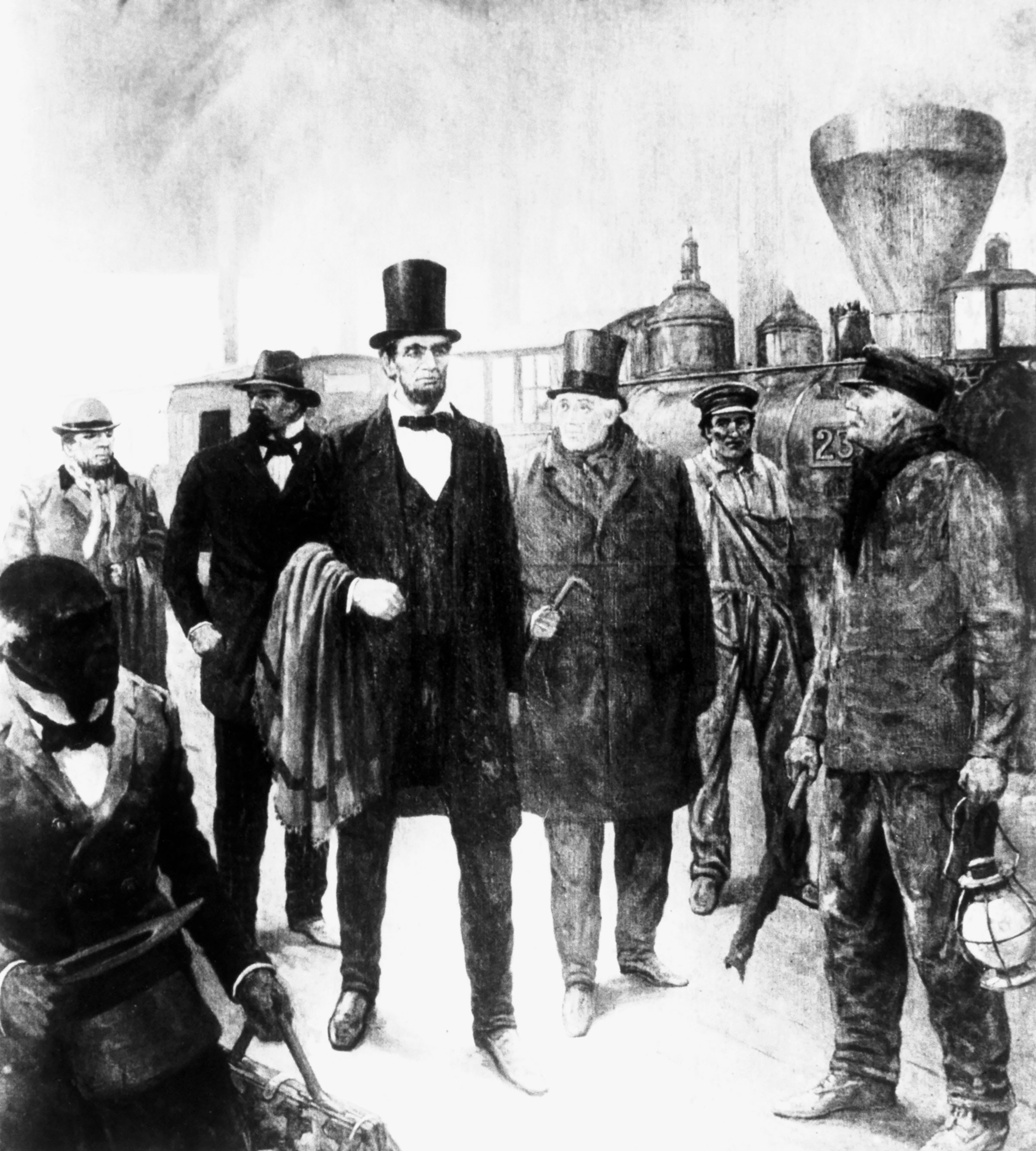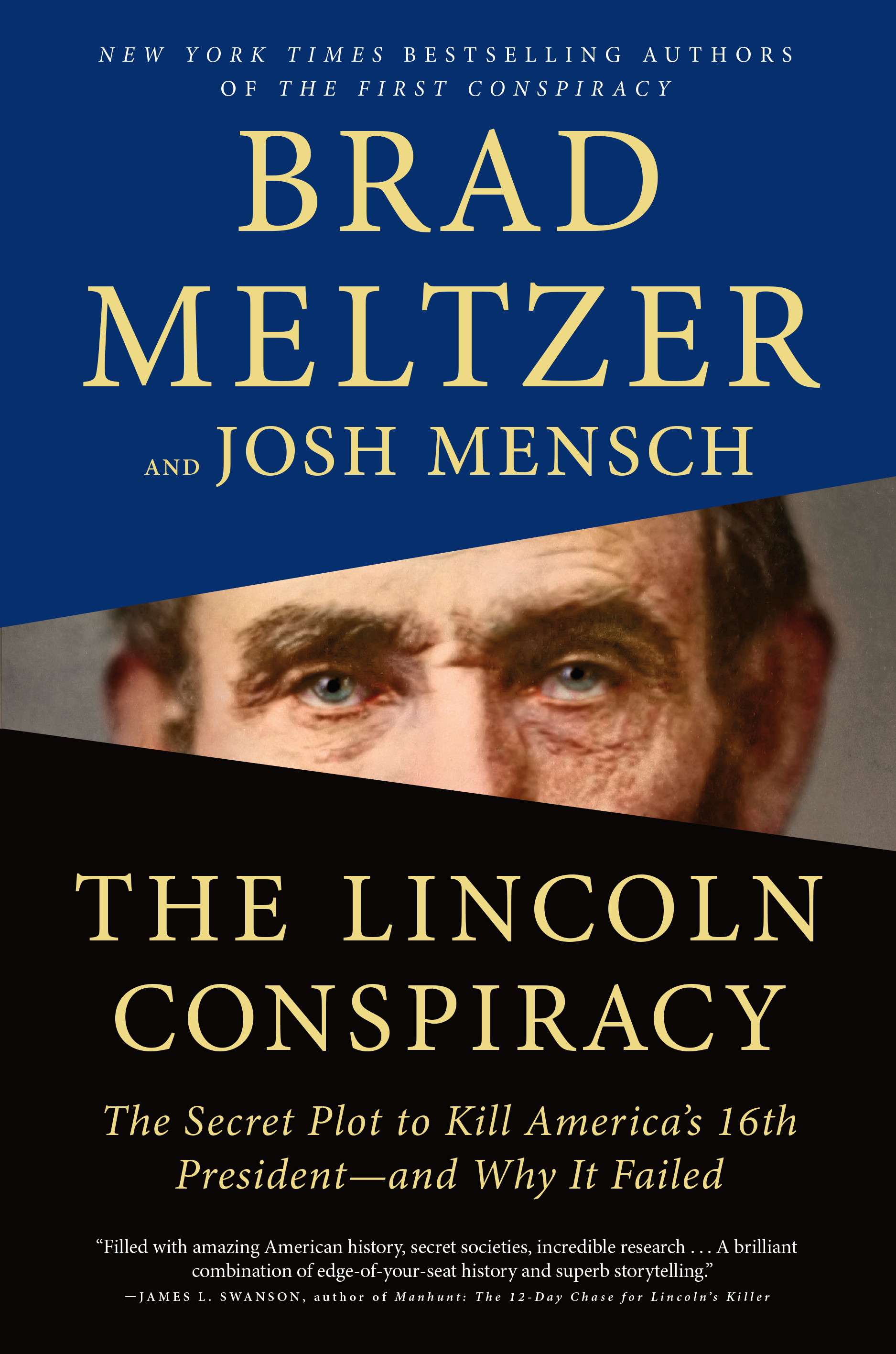
They tried to kill Abraham Lincoln long before shots were fired at Ford’s Theatre. Four years before John Wilkes Booth pulled the trigger, there was another plot to assassinate Lincoln: in February 1861, after Lincoln was first elected, but before he served a single day in office. The nation was deeply divided—each side hating the other with unprecedented venom and rage as the country was tearing itself in half.
Sound familiar?
The plot was simple: Before his first inauguration, Lincoln was scheduled to take an 11-day railroad trip from his home in Springfield, Illinois to Washington, D.C. Along the way, he’d stop in major cities filled with supporters. At the end of the trip, Lincoln’s train would go through Baltimore, Maryland, which at the time was a slave state. Needless to say, people there weren’t exactly Abraham Lincoln fans.
So when they heard that Lincoln’s train was scheduled to come through Baltimore, a local secret society hatched a plot to kill him.
Who was this group? It began with The Knights of the Golden Circle. Originally formed in 1850s, the KGC was a white supremacist organization dedicated to creating a slave empire in the South that extended through Mexico and the Caribbean—a true “golden circle” where slavery would thrive.
After the 1860 election, they saw Lincoln as a direct threat to the “southern way of life”—that is, a threat to slavery—and were determined to stop his Presidency at any cost.
One zealous faction of this group was based in Baltimore. It was this smaller group of KGC members—operating independently of the larger organization—that began to devise their plan.
By studying the itinerary for Lincoln’s train trip, the Baltimore conspirators determined the exact day and hour that Lincoln would transfer train stations within their city. That would be their moment to strike.
Thankfully, the scheme was discovered by Allan Pinkerton, generally considered the country’s first private detective. Pinkerton and his top agent Kate Warne—the first-ever woman detective in America—embarked on an against-the-clock undercover operation to figure out the conspirators’ plans and protect the President-elect.
Using fake names and disguises, Pinkerton, Warne and the rest of their team went undercover, infiltrating the enemy.
In the end, thirty-six hours before the assassins were set to strike, at a hotel in Philadelphia, Pinkerton finally told Lincoln about the plot. Of course, it’s clear that Lincoln needs to change his schedule—they want him to hop on a new train that very night. But instead, Lincoln said that he won’t change anything until after he goes to Philadelphia. What’s in Philly? Lincoln was going there to commemorate the birthday of his hero, George Washington, by raising a flag over Independence Hall. At that moment, Lincoln’s life was at risk. But he refused to miss this public moment to honor George Washington.
Was it out of loyalty to our first President? His commitment to the crowds in Philadelphia? Or just a simple desire to keep his word?
To this day, the answer is unclear. But what is clear is this: Lincoln knew that some things were more important than his own safety.
In a time of crisis, he understood that he had a higher purpose. Seven hours later, standing in front of a large crowd at Independence Hall, Lincoln wasn’t there to serve himself, but to serve the greater good.
In his speech that day—a morning where he knew a small cabal was plotting to murder him—Lincoln evoked the nation’s founding and said, “I have never had a feeling politically that did not spring from the sentiments embodied in the Declaration of Independence.” He described the “principle of liberty” enshrined in that document and said, “If this country cannot be saved without giving up that principle… I would rather be assassinated on this spot than surrender it.”
The audience had no idea that just a few hours earlier, Lincoln had been told of a murder plot to do exactly that.
Later that night, at 5:45pm, Lincoln felt a tap on his shoulder. That was the signal. At a natural break in the conversation, Lincoln took Pennsylvania Governor Andrew G. Curtin by the arm, and the two casually walked out the back door of the hall, as if they were chatting in private.
Lincoln, however, would not come back. The Governor knew this because he was in on the rescue plan too, and in no time at all, Lincoln was on his way. Pinkerton and Warne gave him a codename. They gave him a disguise. And on a speeding train in the middle of the night, they did their best to hide the man who was, at that moment, the most recognizable person in the country.
In the end, when word got out that Lincoln had arrived safely in Washington, the reactions were, like today, bitterly divided. Half the country called Lincoln a strategic genius for switching trains and saving his own life. The other half called him a coward, saying that U.S. Presidents should never run or cower in fear.
What mattered was Lincoln’s response. A little over a week later, at his first inauguration, plainclothes police officers and soldiers were planted in the crowd, searching for assassins. But there was no crack of a rifle that day.
Lincoln’s inaugural speech was for the most part careful and cautious. Looking out over the crowd, Lincoln spoke directly to his enemies in the Southern slaveholding states, saying he meant them no harm.
Compared to some of his later Presidential speeches, this first inaugural didn’t have the heightened moral poetry that illuminated his greatest words. The speech ended, however, with a genuinely heartfelt plea:
We are not enemies, but friends. We must not be enemies. Though passion may have strained, it must not break our bonds of affection. The mystic chords of memory, stretching from every battle- field, and patriot grave, to every living heart and hearthstone, all over this broad land, will yet swell the chorus of the Union, when again touched, as surely they will be, by the better angels of our nature.
It was a pure expression of generosity, of patriotism, and, perhaps most important, of hope. In the face of his own murder—in the midst of so much venom and hate—it was a lesson of unity.
It’s a lesson we need today, more than ever.

Meltzer is the author of THE LINCOLN CONSPIRACY: The Secret Plot to Kill America’s 16th President—And Why It Failed.
More Must-Reads From TIME
- The 100 Most Influential People of 2024
- Coco Gauff Is Playing for Herself Now
- Scenes From Pro-Palestinian Encampments Across U.S. Universities
- 6 Compliments That Land Every Time
- If You're Dating Right Now , You're Brave: Column
- The AI That Could Heal a Divided Internet
- Fallout Is a Brilliant Model for the Future of Video Game Adaptations
- Want Weekly Recs on What to Watch, Read, and More? Sign Up for Worth Your Time
Contact us at letters@time.com